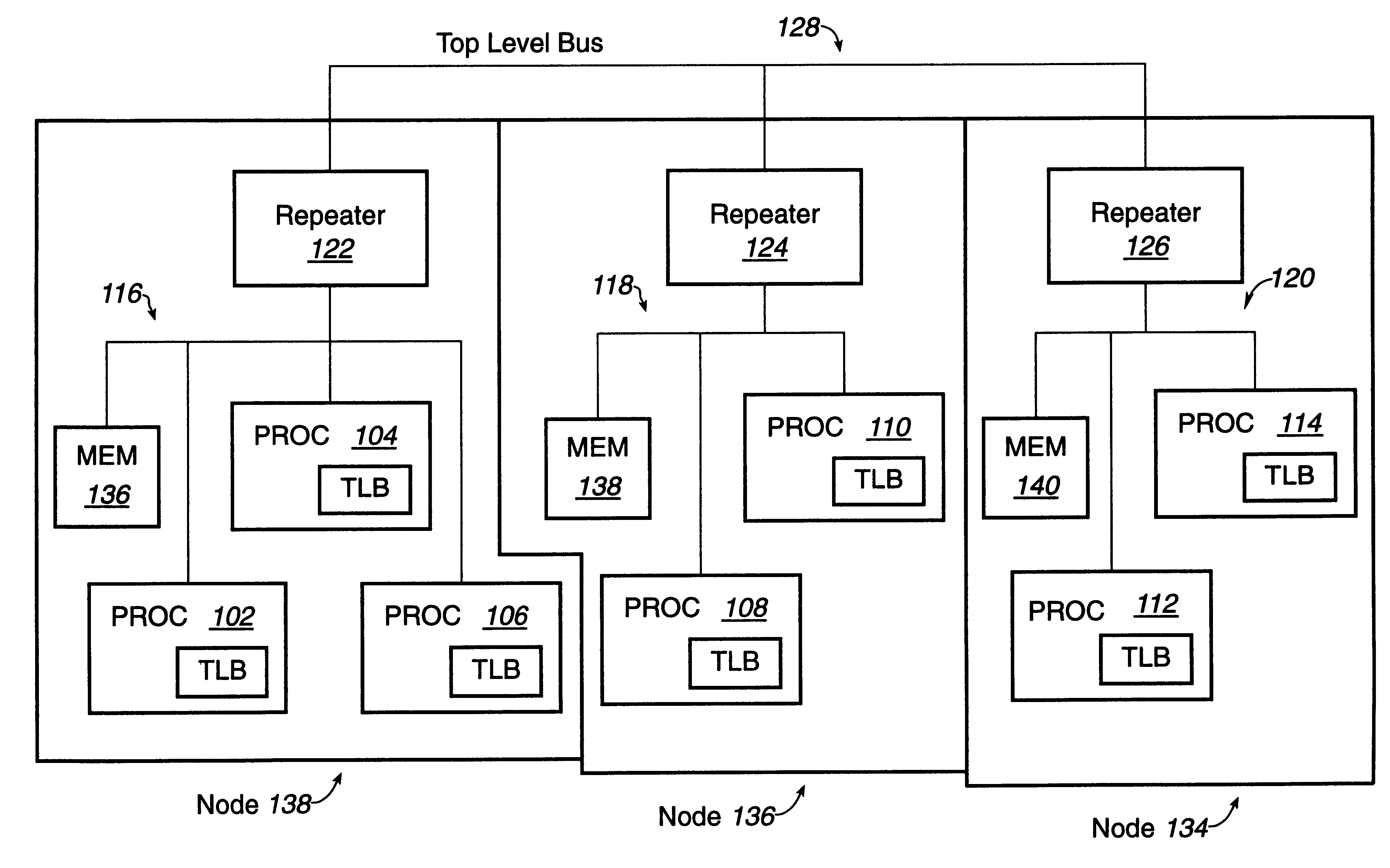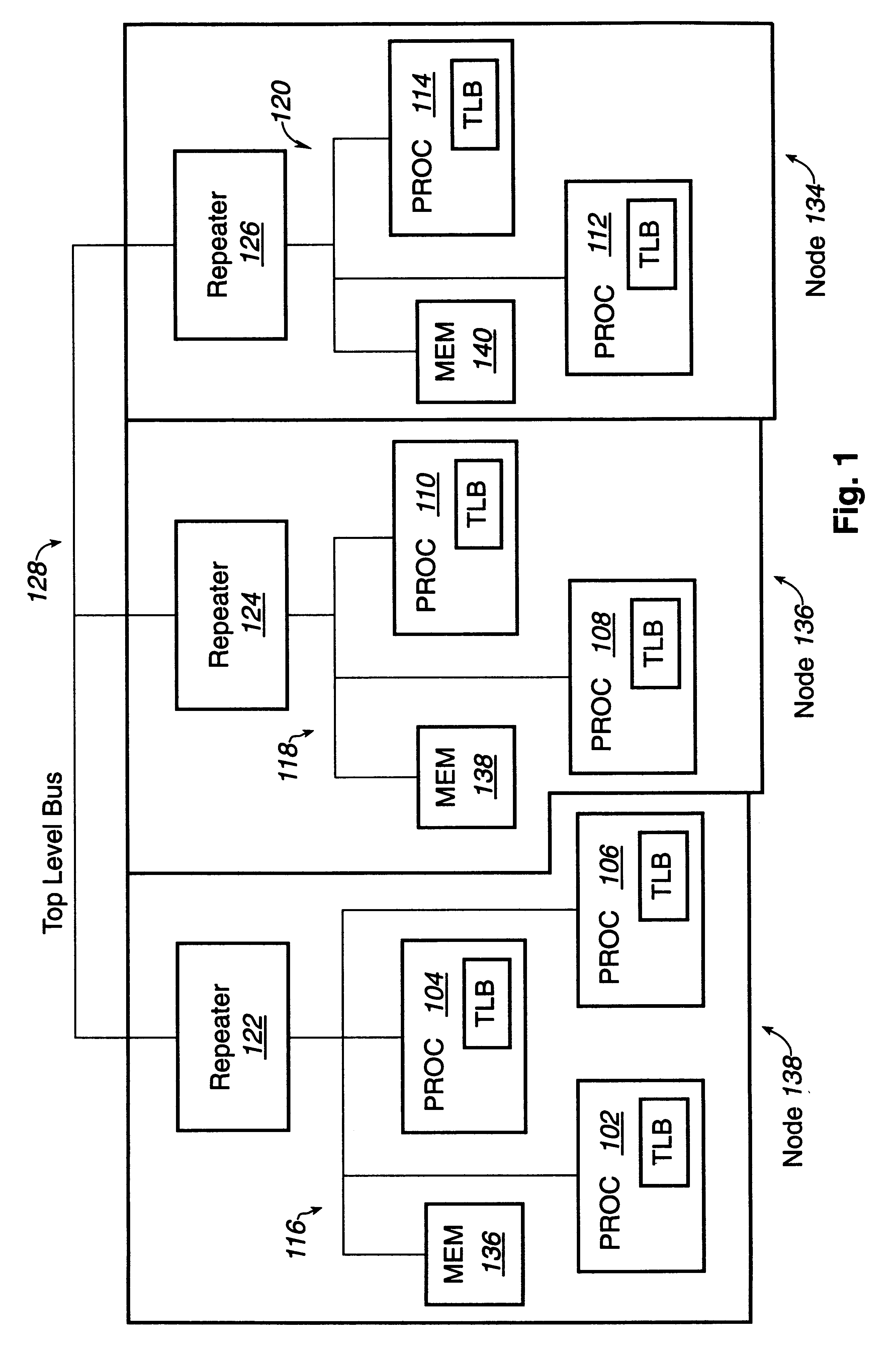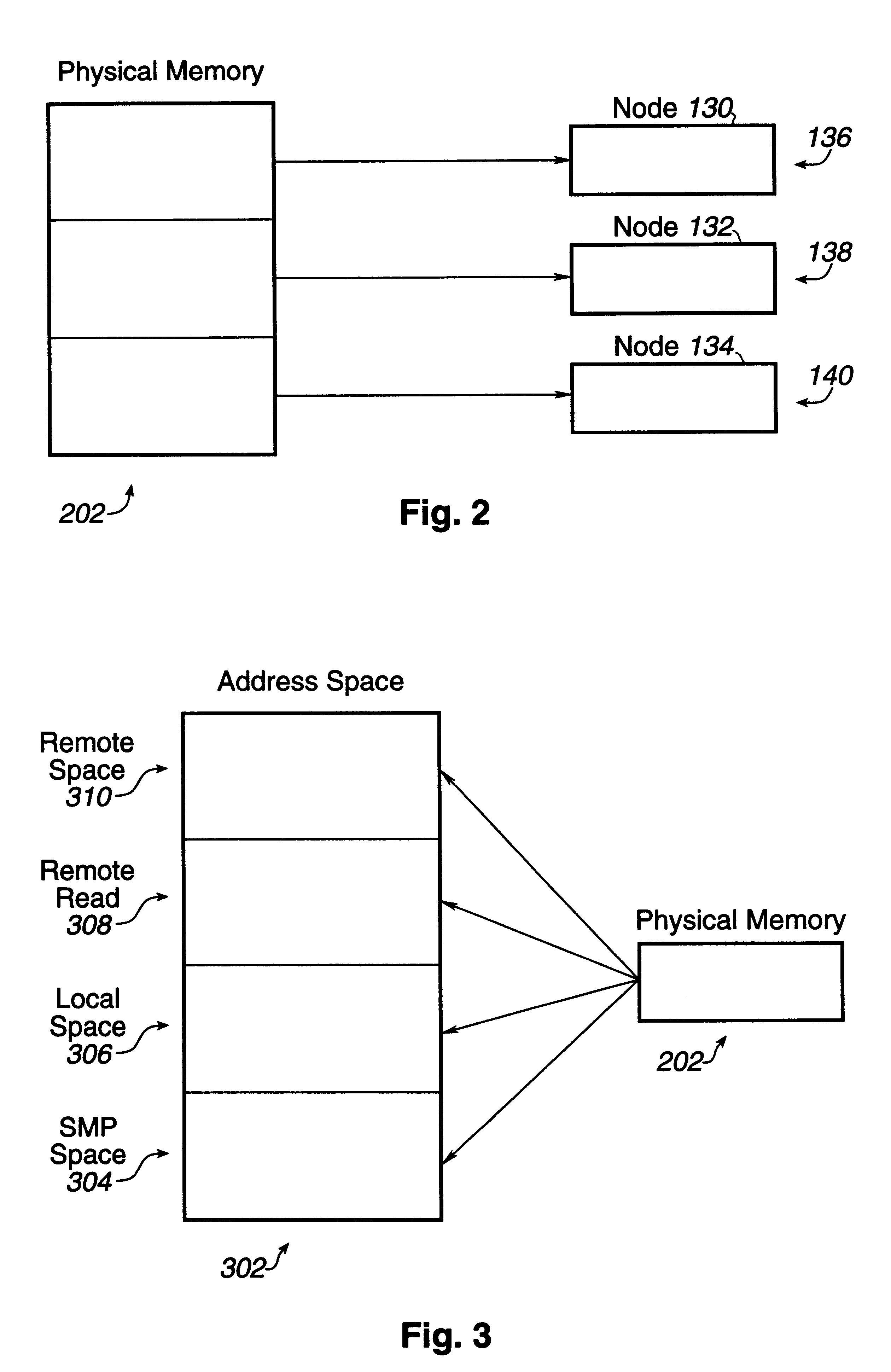Shared memory system for symmetric multiprocessor systems
a multiprocessor system and shared memory technology, applied in the field of symmetrical multiprocessor systems, can solve the problems of limited usefulness of multiprocessing computer systems, shared bus architectures, invalidated copies of previous data,
- Summary
- Abstract
- Description
- Claims
- Application Information
AI Technical Summary
Problems solved by technology
Method used
Image
Examples
Embodiment Construction
A hierarchical bus includes a plurality of bus levels and nodes. A subset of the total number of nodes is connected to each of a plurality of low level busses. The low level busses are connected to one or more higher level busses via repeaters. The higher level busses are connected to even higher level busses via more repeaters. This concept naturally extends itself to as many levels of bus hierarchy as needed. At the highest stage, the repeaters are connected by a top level bus.
FIG. 1 illustrates a two level bus hierarchy. FIG. 1 includes nodes 138-134 and a top-level bus 128. Node 138 includes processors 102-106, low-level bus 116, memory 136, and repeater 122. Processors 102-106, repeater 122, and memory 136 are connected to low level bus 116. Processors 102-106 include a translation look-aside buffer (TLB). A TLB is a device that stores the most recently accessed virtual-to-physical address translations. Node 136 includes processors 108-110, low-level bus 118, repeater 124 and m...
PUM
 Login to View More
Login to View More Abstract
Description
Claims
Application Information
 Login to View More
Login to View More - R&D
- Intellectual Property
- Life Sciences
- Materials
- Tech Scout
- Unparalleled Data Quality
- Higher Quality Content
- 60% Fewer Hallucinations
Browse by: Latest US Patents, China's latest patents, Technical Efficacy Thesaurus, Application Domain, Technology Topic, Popular Technical Reports.
© 2025 PatSnap. All rights reserved.Legal|Privacy policy|Modern Slavery Act Transparency Statement|Sitemap|About US| Contact US: help@patsnap.com



